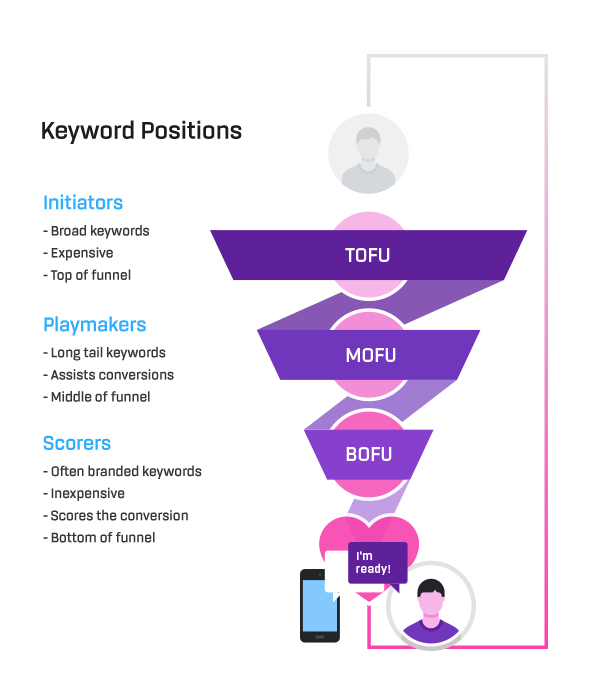Every marketer knows conversions don't happen instantly, but many aren't aware that the keywords they choose for ads serve different purposes, kind of like the many roles that make up a sports team. Keywords can be initiators, playmakers, or scorers. It's important to recognize that your keywords are team players, and value must be assigned to them based on their role. This can be done through attribution modeling.
Attribution modeling is nothing new, yet it can be an intimidating topic for marketers and Google Ads users. This might be due to the cryptic-looking reports or maybe the fact that most blog posts around the subject tend to focus on the complexities and challenges rather than what can be accomplished. It's one of those areas in Google Ads strategy that many marketers simply like to stay clear of and end up missing out on a lot of important data. But if you're not utilizing those reports, there's a good chance you're underserving yourself or your client.
The good news is that marketing attribution modeling isn't the menacing beast it's often made out to be. In our quick and easy guide, we'll hold your hand and simplify things as much as possible.
What is Attribution Modeling?

Attribution modeling is a marketing method used to identify and measure the effectiveness of various touchpoints or channels in a customer's journey that contribute to a conversion, such as a purchase or sign-up.
By assigning value to each interaction, attribution models provide insights into how channels like email, social media, and search ads impact customer decisions, helping marketers optimize both campaigns and budgets. This is essential for effective Google ads management.
Essentially, an attribution model is a framework that distributes credit across different marketing touchpoints in the customer's path to conversion. Each model distributes credit differently, offering unique perspectives on which channels or interactions are driving the most value, enabling data-driven decisions to enhance marketing strategy.
Types of Attribution Models

Attribution models in Google Ads determine how credit for conversions is assigned across various touchpoints in a customer's journey. Understanding these models is crucial for accurately assessing the effectiveness of your Google advertising efforts.
Types of Google Ads Attribution Models:
- Last Click Attribution: Assigns 100% of the conversion credit to the last-clicked ad and corresponding keyword.
- Pros: Simple to implement; highlights the final interaction leading to conversion.
- Cons: Ignores the influence of earlier interactions in the customer journey.
- Data-Driven Attribution: This service distributes conversion credit based on your account's historical data, evaluating the actual contribution of each ad interaction across the conversion path. This attribution model also uses machine-learning algorithms to improve data analysis.
- Pros: Provides a nuanced view by considering all interactions; adapts to changes in consumer behaviour.
- Cons: Requires sufficient data to generate accurate models. and the cost of queries to the analytics warehouse can be prohibitive (see, e.g., a Snowflake pricing calculator for more).
Comparison of Last Click and Data-Driven Attribution
|
Attribution Model |
Last Click |
Data-Driven |
|
Definition |
Assigns 100% of the conversion credit to the last interaction before the conversion |
Distributes credit across various touchpoints based on their actual contribution to conversions |
|
Best For |
Simple analyses or when the last interaction is most influential (e.g., impulse purchases) |
Complex customer journeys where multiple interactions play significant roles |
|
Pros |
Easy to implement and understand; ideal for single-channel attribution |
Provides a holistic view of the customer journey; highly accurate as it uses real data patterns |
|
Cons |
Ignores earlier touchpoints; may undervalue top-of-funnel marketing efforts |
Requires sufficient conversion data to work effectively; can be complex to analyze |
|
Insights Provided |
Focuses on final interactions, useful for identifying effective closing channels |
Highlights the impact of each touchpoint, enabling better budget allocation across channels |
|
Optimization |
Primarily useful for optimizing final-stage marketing efforts |
Allows for more comprehensive optimization across the entire journey to conversion |
Creditable Channels that Google Uses to Measure Conversions
When measuring conversions, Google categorizes channels into several distinct groups, each representing different sources of traffic. Understanding these categories helps advertisers like you optimize campaigns by being able to tell where conversions are coming from and how each channel contributes to customer acquisition.
Here's a breakdown of the primary creditable channels Google uses:
|
Creditable Channel |
Description |
|
Google Paid Channels |
Refers to all Google-specific paid advertising platforms, such as Google Ads (Search, Display, Shopping, Video, etc.), that drive traffic and conversions through paid promotions on Google. |
|
Paid Channels |
Encompasses all paid advertising efforts beyond Google, where conversions result from paid promotions. |
|
Paid and Organic Channels |
Includes both paid and organic (unpaid) traffic sources, combining efforts from advertising campaigns and organic search results, social media, and content marketing. |
|
[Publisher] Channels |
Refers to ad campaigns run through specific publishers outside of Google (e.g., media companies or ad networks), typically targeting audiences through programmatic or native ads. |
|
Unknown Channels |
Conversions from sources that cannot be identified or tracked accurately, often due to missing data or tracking limitations, and may include direct traffic sources. |
- Google Paid Channels
This category includes all Google-specific paid advertising efforts, such as Google Ads on Search, Display, Shopping, and Video. Conversions from Google Paid Channels come directly from ads shown on Google's network, allowing businesses to track performance metrics specifically related to Google's platforms. For advertisers heavily invested in Google Ads, this channel offers precise insights into which Google-specific efforts are driving the most conversions. - Paid Channels
Paid Channels encompass all paid advertising outside of Google's ecosystem. This includes social media platforms like Facebook Ads, LinkedIn Ads, and Twitter (X) Ads, as well as other advertising networks where companies allocate budgets for traffic and conversion generation. Tracking conversions from these channels allows marketers to assess how non-Google paid campaigns are contributing to their overall marketing goals, helping in budget allocation across diverse platforms. - Paid and Organic Channels
This combined category includes both paid advertising and organic (unpaid) sources of traffic. Paid and Organic Channels provide a holistic view by considering conversions from paid ads as well as from organic sources like search engine results, social media shares, and direct content marketing efforts. For businesses using a mix of paid and organic tactics, this channel combination highlights how all aspects of their strategy work together to drive conversions. - [Publisher] Channels
These channels refer to campaigns run through specific publishers outside of Google, often through programmatic or native advertising. Examples might include ad placements on popular media sites, content networks, or specialized ad platforms. Publisher Channels can be valuable for brands seeking a targeted audience or specific demographic, allowing marketers to understand conversions from ads placed directly with major content providers or media companies. - Unknown Channels
Unknown Channels capture conversions that lack a clearly identifiable source. This could be due to missing data, tracking limitations, or issues with UTM parameters and tracking codes. Unknown Channels often include direct traffic, where the conversion source cannot be pinpointed. While less detailed, analyzing this category helps marketers identify tracking issues and refine their setup to minimize attribution gaps.
Brand Searches vs Expensive Top-of-Funnel Keywords
Using the last-click attribution model, it's very easy to overestimate branded queries and undervalue your workhorse keywords driving initial website visits.
This is why Google made the default setting "Data-Drivenattribution" in GA4. However, note that you won't be able to see historical data under this setting; you'll only start seeing data from the time you initiated your first ad campaign under this setting. So, it's still important to look at and understand past reports that you've already run for your ad campaigns.
The path that a visitor to your website takes before they make a purchase can vary widely depending on your industry and your typical sales process, but here's a simple and common scenario that's applicable to many businesses:
- A visitor initiates a broad search for a service or product that you provide (e.g., trailer manufacturers), lands on your website, and takes a quick glance at your landing page. They are content with their quick visit but want to do their due diligence and leave to view some competitor websites for comparison.
- The next day, they perform the same search, but this time, their query is more specific and based on what they learned the previous day (e.g., tandem forestry trailer manufacturers ). They land back on your site, remember your brand and this time take the time to read much more of your content. They are happy with their experience but still aren't ready to convert at that moment.
- On the third day, they search directly for your company name (which is in their memory at this point), click on an ad, land on your website again, and reach out to you.
From this example, you can see that the customer searched for and went to your website three times before they finally decided to buy (or at least start the sales process if you're B2B). That journey is important for you to understand how your customers interact with your ads.
If you are only using the last-click model, your [company name] is all that will show as being responsible for this lead. If you are optimizing your bidding strategy using this model alone, you will likely run into the following problems:
- Overestimating branded keywords because they're converting high and are low cost.
- Undervaluing your key initiators because they're not converting high and are expensive.
- Being unaware of your top assisting keywords because it's difficult to gauge their true performance.
However, if you're using data-driven attribution modeling to help you understand and optimize, you'll be able to measure the true value of the different types of queries. See the illustration below to see how these different types of keywords work together and relate to the marketing funnel.

- Key Initiators: These broad type keywords (e.g. trailer manufacturers) are your front row players, and the most expensive since there is more competition for them. They are also likely to convert much lower than bottom-of-funnel queries since the point of an initiator is to connect with a prospect early in the buying process.
- Playmakers: These keywords tend to be more specific than your initiators (e.g. tandem forestry trailer manufacturers), and assist the customer down the buying path. These support role types can easily go unrecognized, but identifying them can make a critical impact on your bidding strategy and overall performance.
- Scorers: These are often branded keywords (your actual company name) which generally make them inexpensive. However, these keywords are bottom-of-the-funnel so often result in a direct conversion.
Quick and Easy Attribution Reporting

At this point, you should have a clear understanding of the different types of keyword positions, how they support each other, and the importance of measuring their real values. Our hope is that you've learned something new, and we can't wait to uncover this new data to save you money and boost conversion outcomes. But we've got one more step before you dive in. We've discussed the "why" and now it's time to talk about the "how".
Here are 3 quick and easy reports to help you make some key improvements in your account:
1. Identify The Keywords That Are Actually Working
How can you discover which keywords are your top players and which ones need to be cut?
Well first, you have to understand the performance of the keywords you used in your ad campaign. Follow these steps:
- Click the "Campaigns" icon
in your Google Ads account.
- Click the audiences, keywords, and content dropdown in the section menu.
- Click search keywords.
On the resulting "search keywords" page, you'll see three important details that will give you better insight into the performance of your chosen keywords:
- Status: Displays the eligibility and approval status of your keywords, basically whether the keywords you chose meet Google's policies. For instance, a keyword marked as "Eligible" adheres to Google Ads policies and is capable of triggering ads. Hovering over each keyword's status provides insights on performance metrics like Quality Score.
- CTR (Clickthrough rate): Reflects how frequently customers click on your ad after it's shown. A high CTR suggests your ads are engaging.
Important: On the Search Network, a CTR below 1% usually means your keywords could be optimized. Consider removing low-CTR keywords or refining them to be more targeted in Google Ads.
- Quality Score: Indicates how your ad quality stacks up against other advertisers. This score, rated from 1–10, is based on factors such as Expected CTR, Ad relevance, and Landing page experience.
2. Determine Your Key Initiators and Playmaker Keywords
Remember how we said that key initiator keywords are broad and that playmaker keywords are often long-tail? These keywords will likely be the most time-consuming to choose because there are many considerations that go into selecting the best ones. You'll also find that you need to perform step one in this section continually to determine which of your initiators and playmakers are performing the best.
Here are some tips for choosing great keywords in Google Keyword Planner for your Google Ads campaigns:
Do's and Don'ts When Looking for Keywords:
|
Do's |
Don'ts |
|
|
|
|
|
|
|
|
|
|
|
|
|
|
3. Identify Team Players With Last Click and Data-Driven
Attribution models allow you to control how much credit each ad interaction receives for conversions, enabling you to:
- Engage customers earlier: Identify ways to influence potential buyers earlier in their journey.
- Align with your business goals: Choose a model that best reflects how customers search for your products or services.
- Enhance bidding strategies: Adjust your bids based on a clearer understanding of your ad performance.
Comparing the Last Click and Data-Driven attribution models is essential to understanding which channels contribute most effectively to conversions. Each model offers unique insights: Last Click attribution assigns full credit to the final interaction before conversion, highlighting closing channels, while Data-Driven attribution distributes credit across all touchpoints based on each interaction's impact, giving a broader view of the customer journey.
To access these insights, navigate to the Attribution Models report in Google Analytics 4 (GA4) by going to Advertising > Attribution > Model Comparison. Here, you can compare Last Click and Data-Driven models side by side, analyzing key events like conversions and revenue generation under each model. This report helps uncover not only which channels are essential for driving final conversions but also which touchpoints are most influential along the path.
For example, a Last Click model may highlight the importance of branded search terms in closing deals, while a Data-Driven model can reveal that earlier interactions, like display ads or social media clicks, play a critical role in guiding prospects through the funnel. Using these insights together, you can make data-informed decisions on ad spending, optimize bids for different stages of the funnel, and allocate budget to the touchpoints that most effectively support your marketing objectives. This holistic approach to attribution enables a balanced view of performance across channels, leading to more strategic and cost-effective ad investments.
Instead of relying on only one attribution model like last click, you need to consider all the attribution model types, as they will give you a better overall understanding of how your customers convert.
Conclusion
Attribution modeling is essential for accurately valuing each step in your customers' journey, helping you understand the full impact of your keywords. By recognizing and utilizing models beyond the last click, you can better allocate budgets, refine bidding strategies, and reach potential customers earlier in their journey. With these insights, you can drive higher conversion rates and improve campaign performance, creating a more effective and efficient advertising approach.

Lisa Hoffart
Lisa Hoffart is a professional writer with several years of experience crafting well-researched content for a wide variety of industries, from legal, real estate, technology, and more. Lisa is a huge technology geek that loves video games and computers. In her free time, Lisa enjoys sewing, crafting, and hanging out with her cat.












2.png)
2.png)









